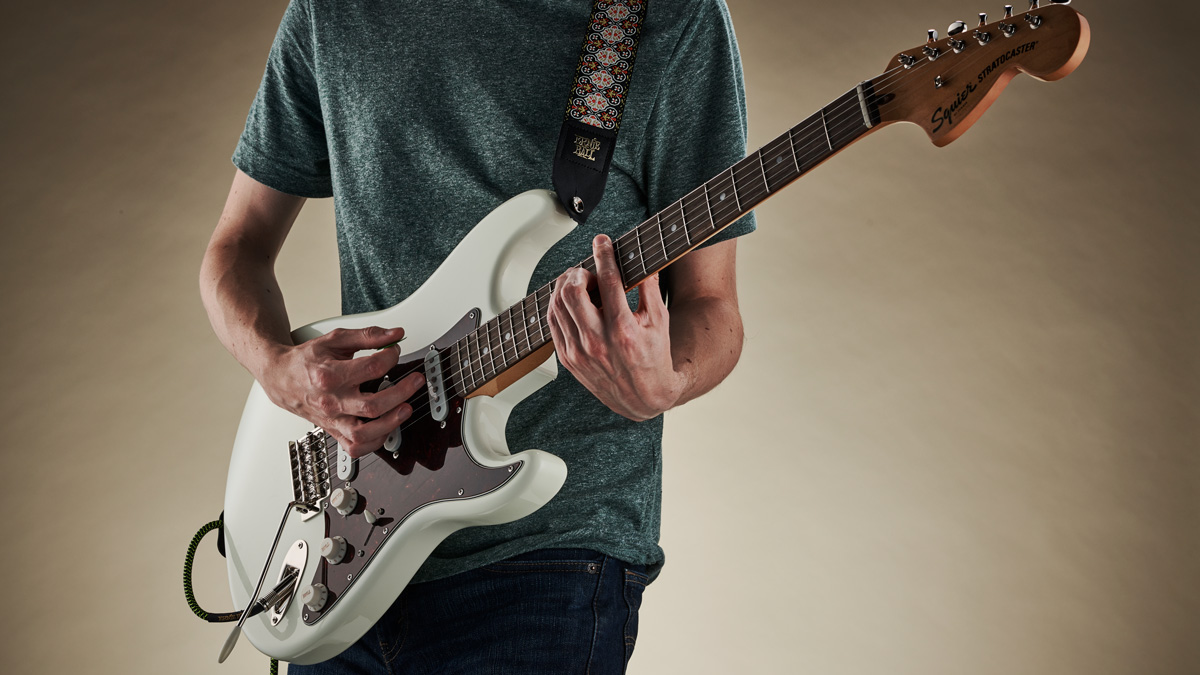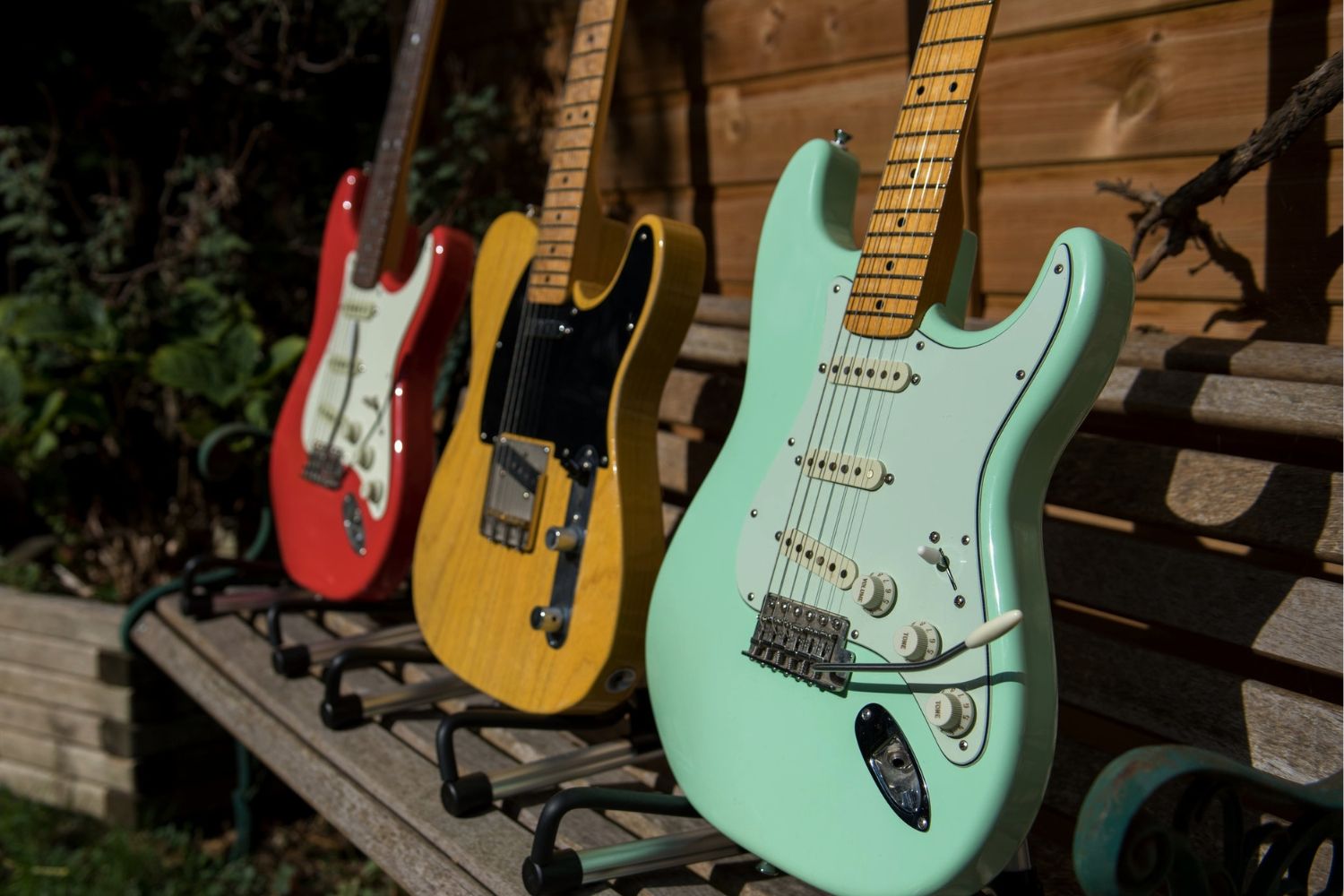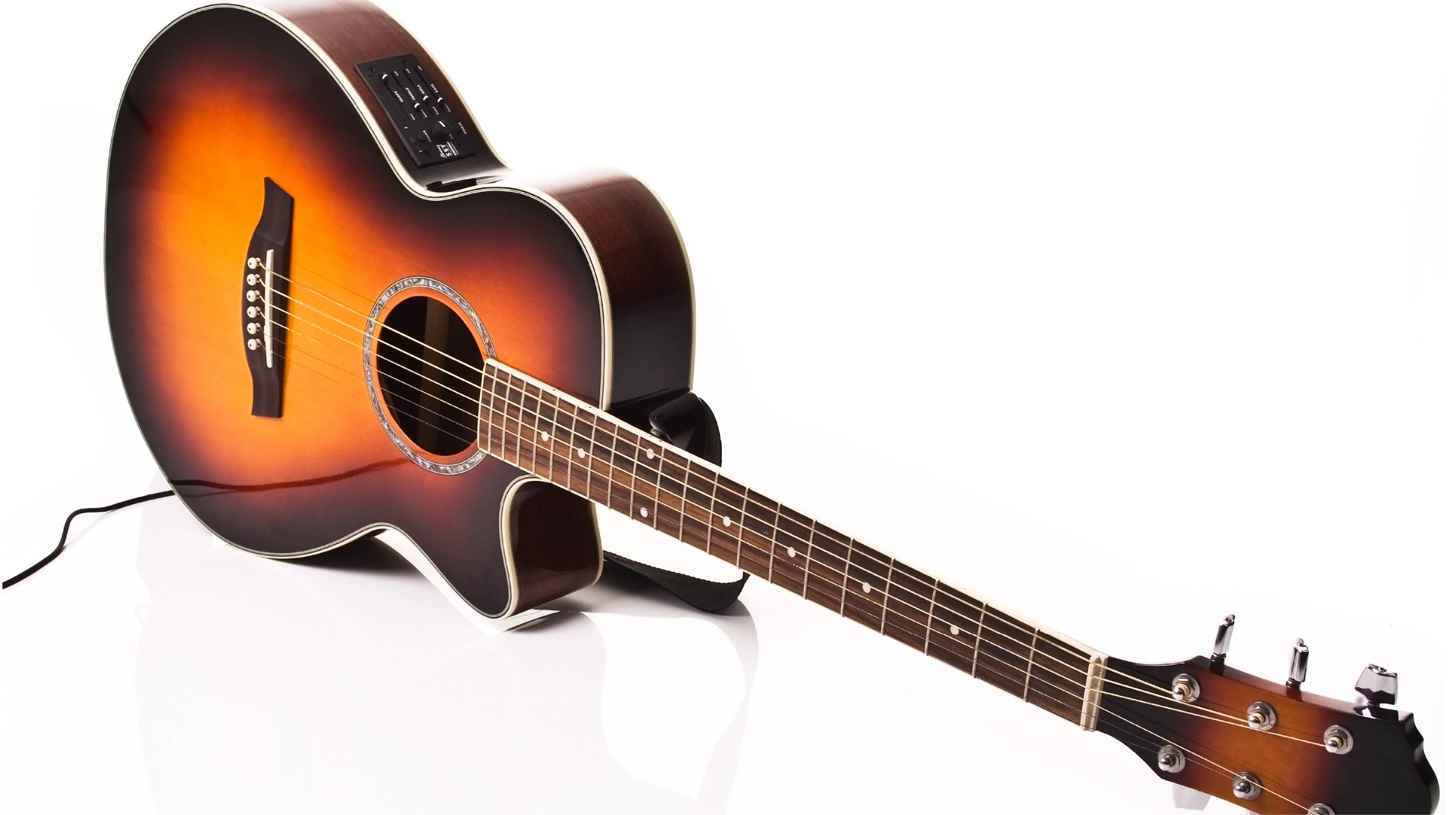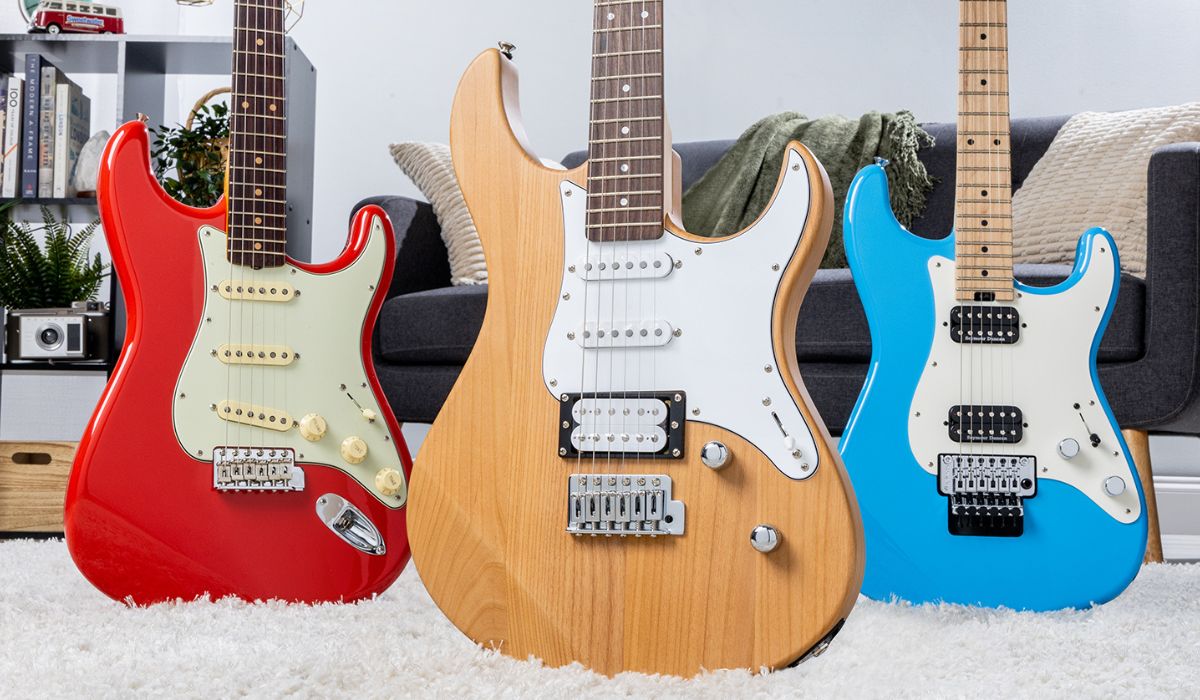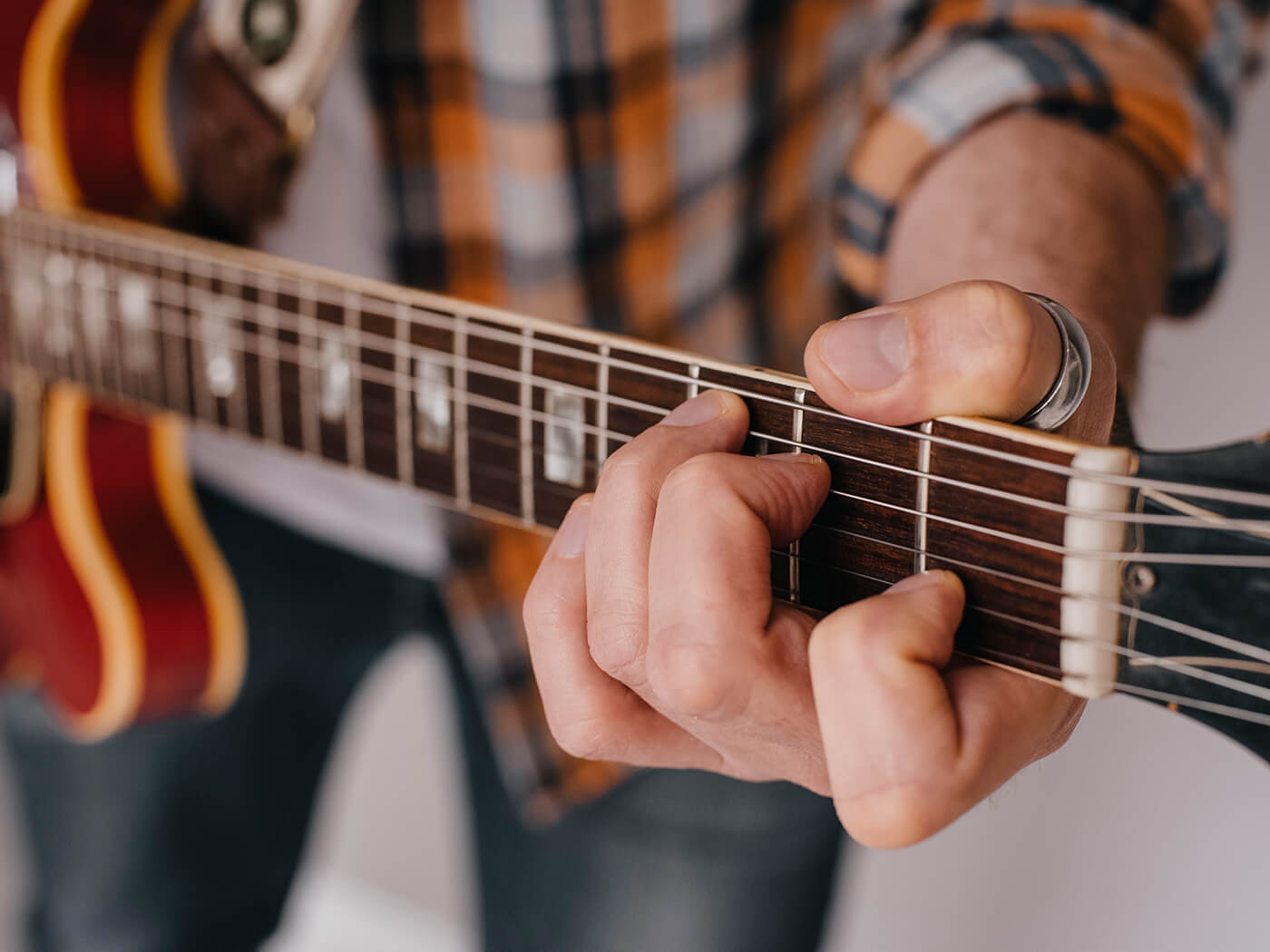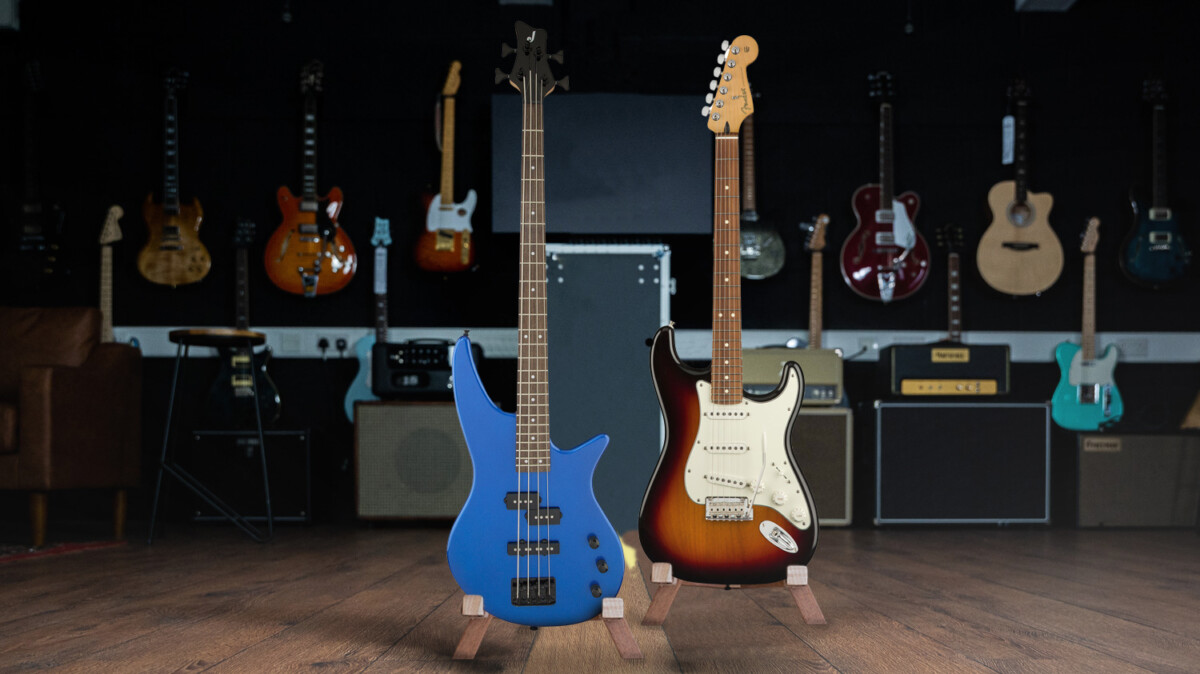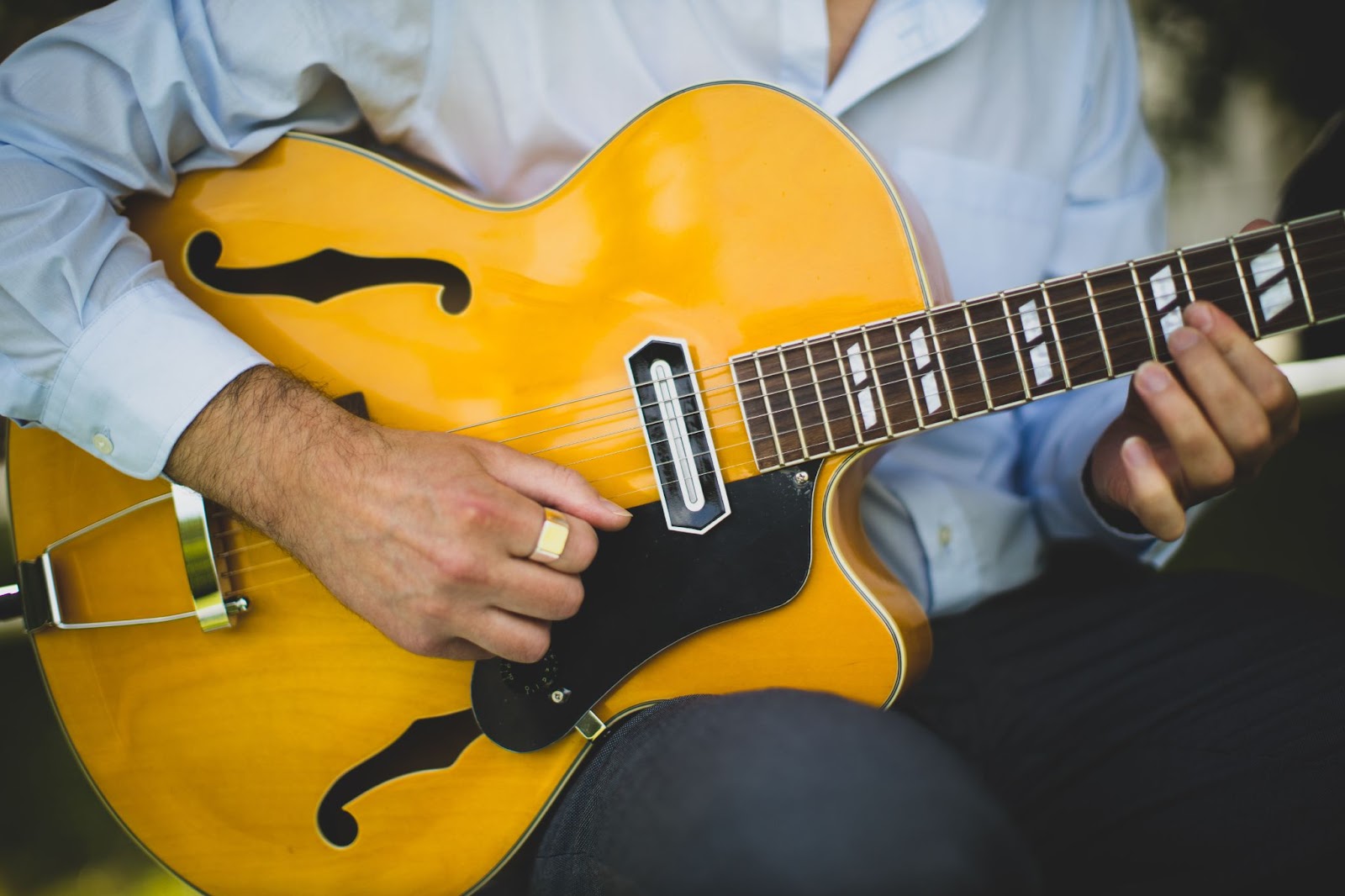Introduction
So, you've decided to pick up the electric guitar and embark on a musical journey that promises endless possibilities for creativity and expression. Congratulations! Learning to play the electric guitar can be an incredibly rewarding experience, whether you dream of performing in front of thousands or simply want to strum along to your favorite songs in the comfort of your own home. As you begin this exciting endeavor, it's important to lay a solid foundation by understanding the instrument, its components, and the fundamental techniques that will set you on the path to becoming a proficient guitarist.
Playing the electric guitar is not only about creating beautiful music; it's also about mastering the instrument itself. From selecting the right guitar to learning how to produce various sounds using amplifiers and effects, there's a wealth of knowledge to explore. While the road ahead may seem daunting at first, with dedication, practice, and the right guidance, you'll find yourself making significant strides in no time.
Throughout this guide, we'll delve into the essential aspects of playing the electric guitar, including choosing the right instrument, understanding its components, tuning, mastering basic techniques, and using amplifiers and effects to enhance your sound. Additionally, we'll cover common chords and scales, providing you with the building blocks for creating your own music and playing along with your favorite tunes.
Whether you're a complete novice or have some experience with acoustic guitar, this guide is designed to equip you with the knowledge and skills necessary to unleash your inner rock star. So, grab your guitar, plug in your amplifier, and let's embark on this exhilarating journey into the world of electric guitar playing. Let's get ready to rock and roll!
Choosing the Right Electric Guitar
When it comes to choosing the right electric guitar, the options can seem overwhelming. However, by considering a few key factors, you can narrow down your choices and find the perfect instrument to suit your playing style and preferences.
First and foremost, consider the genre of music you aspire to play. Different guitar models are tailored to specific musical styles, so understanding your preferred genre can guide you in selecting the most suitable instrument. For instance, if you’re drawn to rock and heavy metal, a guitar with dual humbucking pickups and a solid body might be ideal, whereas those inclined towards blues or jazz might lean towards semi-hollow or hollow-body guitars with single-coil pickups.
Another crucial aspect to contemplate is your budget. Electric guitars come in a wide price range, and while it’s tempting to splurge on a top-of-the-line model, there are excellent options available for beginners and intermediate players. Setting a budget will prevent you from overspending and help you focus on guitars that offer the best value within your price range.
Furthermore, consider the guitar’s playability and comfort. Visit a music store and try out different guitars to get a feel for their neck profiles, weight, and overall ergonomics. A comfortable guitar that feels good in your hands can significantly enhance your playing experience and encourage longer practice sessions.
Additionally, examine the guitar’s hardware and craftsmanship. Ensure that the tuning pegs, bridge, and pickups are of good quality and that the overall construction is solid. A well-built guitar not only stays in tune better but also resonates more effectively, resulting in a richer and more balanced tone.
Lastly, take into account the visual appeal of the guitar. While aesthetics shouldn’t be the primary consideration, playing an instrument that you find visually appealing can boost your motivation and pride in ownership.
By carefully considering these factors, you can make an informed decision when selecting your electric guitar, ensuring that it complements your musical aspirations and provides a solid foundation for your musical journey.
Understanding the Guitar Components
Before diving into playing the electric guitar, it’s essential to familiarize yourself with its various components. Understanding the anatomy of the instrument will not only deepen your appreciation for its construction but also empower you to make informed decisions regarding maintenance, modifications, and overall playing technique.
Let’s start with the body of the guitar, which typically comprises the top, back, and sides. The body shape significantly influences the guitar’s tone and resonance. Solid-body guitars, as the name suggests, are crafted from a single piece of wood and are known for their sustain and versatility. On the other hand, semi-hollow and hollow-body guitars offer a more resonant and acoustic-like sound, making them popular choices for jazz, blues, and rockabilly genres.
The neck of the guitar is another crucial component. It consists of the fretboard, frets, and headstock. The fretboard, usually made of rosewood or maple, is where you press down the strings to produce different notes and chords. The frets are the raised metal strips embedded along the fretboard, dividing it into distinct intervals. The headstock houses the tuning pegs, which allow you to adjust the tension of the strings to achieve the desired pitch.
Attached to the neck are the strings, typically made of steel or nickel. The standard electric guitar has six strings, each tuned to a specific pitch. Understanding string gauges and materials can influence the playability and tone of the instrument, enabling you to customize your setup according to your preferences.
At the opposite end of the guitar, you’ll find the bridge, which anchors the strings and facilitates adjustments to their length and intonation. The pickups, located beneath the strings, capture the vibrations and convert them into electrical signals, ultimately shaping the guitar’s sound. Electric guitars may feature single-coil or humbucking pickups, each offering distinct tonal characteristics.
Lastly, the guitar’s controls, often located on the body, allow you to adjust the volume, tone, and pickup selection, offering a wide range of sonic possibilities at your fingertips.
By comprehending the function and significance of these components, you’ll gain a deeper insight into the electric guitar’s mechanics, enabling you to harness its full potential and make informed decisions when it comes to maintenance, upgrades, and playing techniques.
Tuning Your Electric Guitar
One of the fundamental skills every guitarist must master is tuning the instrument. Proper tuning ensures that the strings produce the correct pitches, allowing you to play in harmony with other musicians and enjoy a pleasing, consistent sound. While tuning may seem daunting at first, with practice and the right techniques, you’ll soon become adept at keeping your electric guitar in perfect pitch.
The standard tuning for a six-string electric guitar, from the lowest-pitched string to the highest, is E-A-D-G-B-E. To achieve this tuning, you can use a variety of tools, including electronic tuners, clip-on tuners, tuning forks, or even tuning apps on your smartphone. These tools provide visual or auditory cues to help you adjust the tension of each string until it matches the desired pitch.
When tuning your guitar, it’s crucial to start with a reliable reference pitch. Many tuners offer the option to tune to standard pitch (440 Hz), ensuring that your guitar is in tune with other instruments and recordings. Begin by tuning the low E string, then use the 5th fret of the low E string as a reference to tune the A string, and so on, until all strings are in tune.
It’s important to note that electric guitars, especially those equipped with a tremolo system, may require periodic adjustments to maintain tuning stability. Factors such as string gauge, temperature, and playing style can influence the guitar’s tuning, so it’s beneficial to familiarize yourself with basic setup and maintenance procedures to keep your instrument in optimal playing condition.
Furthermore, developing a good ear for tuning by practicing tuning by ear can be immensely beneficial, especially in situations where electronic tuners are unavailable. Training your ear to recognize and adjust pitch discrepancies will enhance your overall musicality and make you less reliant on external tuning devices.
Regular tuning not only ensures that your guitar sounds its best but also contributes to the longevity of your strings and the overall health of the instrument. By incorporating tuning into your practice routine and paying attention to pitch accuracy, you’ll develop a discerning ear and a strong foundation for playing in tune, whether you’re performing solo or with other musicians.
Basic Guitar Techniques
Mastering basic guitar techniques is essential for every aspiring guitarist, laying the groundwork for more advanced skills and musical exploration. Whether you’re strumming chords or picking individual notes, honing these fundamental techniques will significantly enhance your playing and musical expression.
First and foremost, let’s explore the art of fretting. Fretting involves pressing the strings against the fretboard to produce distinct notes and chords. It’s crucial to place your fingers just behind the frets to achieve clear, resonant tones and minimize string buzz. Additionally, maintaining a relaxed, yet firm grip on the neck of the guitar will facilitate smooth transitions between chords and notes.
Next, let’s delve into picking and strumming. The pick, or plectrum, is a versatile tool for producing a wide range of sounds. Experiment with different pick gauges and materials to find the one that suits your playing style. When strumming, aim for consistent downstrokes and upstrokes, ensuring that each string is struck with precision and clarity. Picking individual notes demands accuracy and control, so practice alternate picking (down-up motion) to develop dexterity and fluency in your playing.
Furthermore, understanding proper hand positioning and posture is crucial for executing techniques with ease and minimizing strain. Maintain a relaxed, natural posture while sitting or standing, and position your hands and wrists ergonomically to facilitate fluid movement across the fretboard and smooth picking motions.
Another fundamental technique is bending, which involves pushing or pulling a string across the fretboard to alter its pitch. Bends add expressiveness and emotion to your playing, allowing you to infuse your melodies with character and flair. Practice bending to specific pitches and mastering vibrato, a subtle fluctuation of pitch that imparts richness and depth to sustained notes.
Finally, let’s touch on the importance of rhythm and timing. Developing a strong sense of rhythm is integral to playing with precision and groove. Practice strumming along to a metronome or drum track, and familiarize yourself with common time signatures and rhythmic patterns. Additionally, explore basic strumming patterns and syncopated rhythms to diversify your playing and imbue your music with dynamic energy.
By dedicating time to mastering these fundamental techniques, you’ll build a solid foundation for your guitar playing, enabling you to tackle more complex skills and musical styles with confidence and proficiency. Remember, consistent practice and patience are key to refining these techniques and evolving as a versatile and expressive guitarist.
Common Chords and Scales
As you embark on your journey with the electric guitar, familiarizing yourself with common chords and scales is essential for building a repertoire of musical expressions and laying the groundwork for improvisation and composition. Whether you aspire to strum heartfelt ballads or shred blistering solos, mastering these foundational elements will enrich your playing and expand your creative horizons.
Let’s start with chords, the harmonic building blocks of music. Familiarize yourself with basic open chords such as E major, A minor, and D major, which are prevalent in countless songs across various genres. As you progress, explore barre chords, which allow you to transpose these basic shapes up and down the fretboard, unlocking a plethora of chord variations and voicings.
Understanding chord progressions is equally important. Progressions like the ubiquitous I-IV-V (1-4-5) in major keys and the i-iv-V in minor keys form the backbone of many popular songs. Experiment with different progressions and their variations to internalize their sound and feel, enabling you to accompany melodies and create your own compositions.
Turning our attention to scales, the pentatonic scale is a fundamental and versatile scale that is widely used in rock, blues, and pop music. Mastering the pentatonic scale in various positions across the fretboard provides a solid foundation for melodic improvisation and soloing. Additionally, delve into the major and minor scales, which form the basis for constructing melodies and understanding the tonal characteristics of different keys.
Furthermore, explore modal scales such as the Dorian, Mixolydian, and Aeolian modes, each of which imparts a distinct flavor and mood to your playing. Understanding modal scales expands your melodic vocabulary and equips you with the tools to evoke specific emotions and atmospheres in your musical compositions and improvisations.
As you delve into chords and scales, it’s essential to practice them in the context of musical pieces and backing tracks. Apply chords in song accompaniments and experiment with scale patterns over various chord progressions, honing your ability to seamlessly integrate these elements into your playing.
By mastering common chords and scales, you’ll not only enhance your technical proficiency but also develop a deeper understanding of music theory and harmony. These foundational elements serve as the springboard for your creative endeavors, empowering you to express yourself through captivating chord progressions and captivating melodic phrases.
Using Guitar Effects and Amplifiers
Guitar effects and amplifiers play a pivotal role in shaping the sonic landscape of the electric guitar, offering a myriad of tonal possibilities and expressive capabilities. Understanding how to effectively utilize these tools not only enhances your sound but also broadens your creative palette, allowing you to craft a distinctive and captivating musical identity.
One of the most versatile and widely used effects is the overdrive/distortion pedal, which imparts warmth, grit, and sustain to your guitar tone. Whether you’re aiming for searing rock solos or heavy rhythm crunch, mastering the nuances of overdrive and distortion enables you to infuse your playing with raw energy and intensity.
Delve into the realm of modulation effects, including chorus, phaser, and flanger, each of which adds depth and movement to your sound. Experiment with varying intensity and speed settings to create lush, swirling textures or ethereal, otherworldly tones, expanding your sonic palette and imbuing your music with captivating ambience.
Reverb and delay effects are indispensable for adding spaciousness and dimension to your guitar sound. From subtle, room-like ambience to expansive, cascading echoes, these effects elevate your playing by creating a sense of depth and immersion, enriching your melodies and solos with a captivating sense of space.
Utilizing an amplifier’s built-in equalization (EQ) controls allows you to tailor the tonal characteristics of your guitar, sculpting the frequencies to achieve a desired sonic profile. Experiment with the bass, midrange, and treble controls to shape the overall tonality of your sound, ensuring that it complements the musical context in which you’re playing.
Understanding the concept of gain staging is crucial for achieving optimal tonal balance and articulation. Proper gain staging involves managing the input levels of your effects and amplifier to ensure that each component interacts harmoniously, resulting in a cohesive and articulate guitar sound with minimal noise and distortion.
Additionally, familiarize yourself with the concept of signal chain and the impact of effect placement on your overall sound. Experiment with different arrangements of effects and pedals to discover unique tonal combinations and sonic textures, allowing you to tailor your sound to suit diverse musical styles and moods.
By mastering the art of using guitar effects and amplifiers, you’ll unlock a world of sonic possibilities, enabling you to craft a signature sound that reflects your musical vision and artistic sensibilities. Embrace experimentation and exploration, and let your creativity flourish as you harness the boundless potential of these transformative tools.
Tips for Practicing and Improving
Embarking on a journey of musical growth and proficiency with the electric guitar requires dedication, patience, and a strategic approach to practicing. By incorporating effective practice techniques and embracing a growth mindset, you can optimize your learning experience and steadily elevate your playing to new heights.
Consistent and focused practice is paramount to mastering the instrument. Establish a regular practice routine, setting aside dedicated time each day to engage with your guitar. Whether it’s a structured practice session or brief, targeted exercises, maintaining a consistent practice schedule cultivates discipline and fosters tangible progress over time.
Set specific, achievable goals for your practice sessions. Whether it’s mastering a challenging chord progression, improving your speed and accuracy, or learning a new technique, clearly defined goals provide direction and motivation, guiding your practice efforts towards measurable improvement.
Embrace a diverse repertoire of musical styles and genres in your practice routine. Exploring varied musical contexts not only broadens your musical horizons but also hones your adaptability and versatility as a guitarist. From blues and rock to jazz and classical, each genre offers unique technical and expressive challenges that contribute to your overall growth as a musician.
Practice with purpose by breaking down complex passages or techniques into manageable segments. Adopt a methodical, incremental approach, gradually building proficiency in challenging areas while maintaining a keen focus on precision and musicality. Additionally, incorporate exercises that target specific technical weaknesses, such as finger dexterity, alternate picking, or chord transitions.
Utilize backing tracks and play-along resources to simulate real musical contexts and develop your sense of timing and groove. Playing along with backing tracks not only enhances your rhythmic precision but also fosters a deeper understanding of musical phrasing and dynamics, elevating your overall musicality.
Seek feedback and guidance from experienced mentors, instructors, or fellow musicians. Constructive critique and personalized guidance can offer invaluable insights, helping you identify areas for improvement and providing you with tailored strategies for honing your skills and musicianship.
Embrace the power of visualization and mental rehearsal. Spend time mentally practicing challenging passages or performance pieces away from the guitar, visualizing your fingers navigating the fretboard with precision and confidence. This mental rehearsal technique can enhance muscle memory and reinforce your overall mastery of the instrument.
Finally, cultivate a positive and resilient mindset. Embrace the inevitable challenges and plateaus as opportunities for growth, and celebrate your progress along the way. Remember that musical mastery is a journey, and each practice session is a stepping stone towards realizing your full potential as a guitarist.
Conclusion
Congratulations on embarking on the exhilarating journey of learning to play the electric guitar. As you’ve discovered throughout this guide, mastering the electric guitar is a multifaceted endeavor that encompasses technical proficiency, musical expression, and creative exploration. By understanding the instrument’s components, honing fundamental techniques, and delving into the realm of chords, scales, and sonic manipulation, you’ve laid a solid foundation for your musical pursuits.
Remember that the path to guitar mastery is not without its challenges, but with dedication, perseverance, and a passion for music, you can overcome obstacles and continue to evolve as a guitarist. Embrace the joy of discovery and the thrill of musical expression as you navigate the intricacies of the electric guitar, and let your creativity flourish as you carve out your unique musical identity.
As you progress on your musical odyssey, stay open to new learning opportunities, seek inspiration from diverse sources, and immerse yourself in the rich tapestry of musical styles and genres. Whether you aspire to perform on stage, compose original music, or simply revel in the joy of playing, the electric guitar offers boundless possibilities for artistic fulfillment and self-expression.
Above all, cherish the musical journey and savor the moments of growth and self-discovery that accompany your practice and exploration. Every note you play, every chord you master, and every melody you create contributes to your evolution as a guitarist and a musician.
So, pick up your guitar, unleash your creativity, and let the timeless allure of the electric guitar propel you towards a world of musical enchantment and boundless potential. Your musical destiny awaits, and the power to shape your musical legacy lies within your hands. Embrace the journey, and let the music resonate with the passion that fuels your soul.







